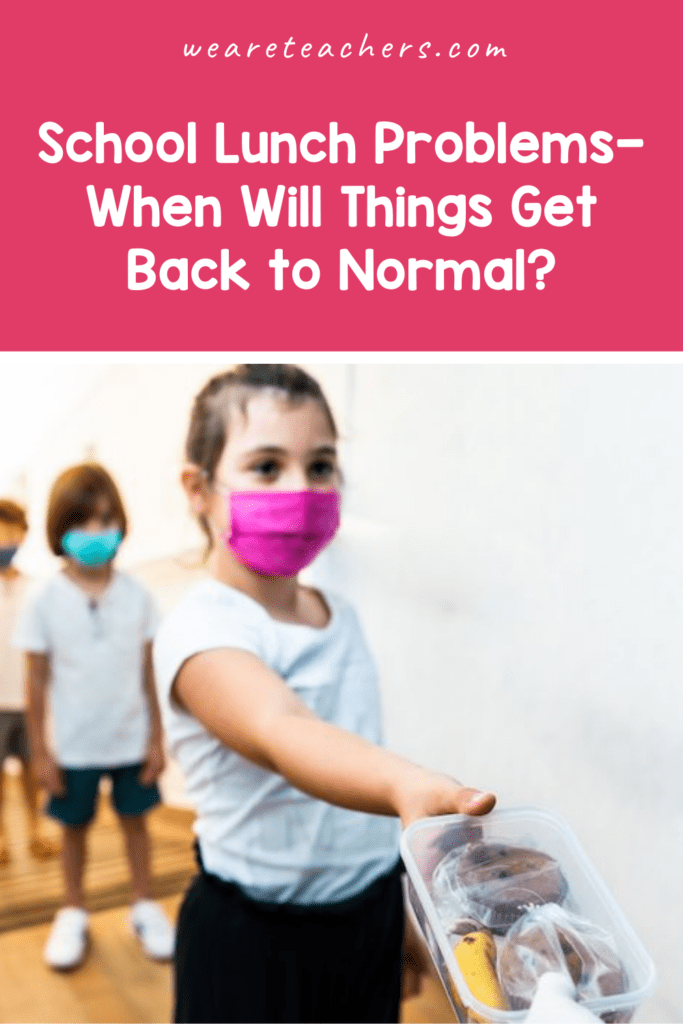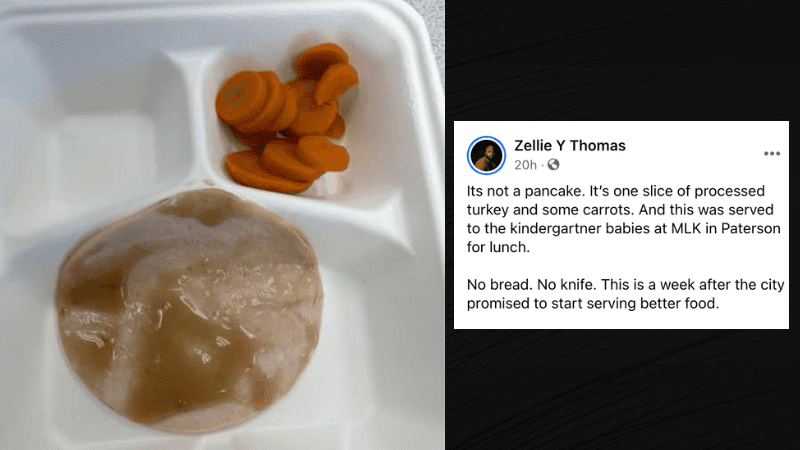The pandemic has impacted many aspects of our lives, even the food supply. We’re starting to see reports of school lunch problems across the country. Some schools are serving only cold lunches as they struggle to transition back to the meals offered prior to the pandemic. In other districts, such as Paterson, NJ, people are reporting lunches that aren’t nearly enough to satisfy most students. Will things ever get back to “normal?” Let’s take a look at this issue and what our community of teachers had to say.
Supply chain shortages and delivery problems
Lunchtime in schools across the United States has been different during the pandemic. Due to supply chain shortages and reduced delivery options, the food available to students has changed. “The menu will be drastically changing. There are days that we don’t get in the supplies that we need,” says Lori Farley, who runs the cafeteria at Red Rocks Elementary in Colorado. “I’ve been in food service for 14 years, and this is very unprecedented.”
Being short-staffed makes lunch prep harder. On most days, Farley is in the kitchen preparing breakfast and lunch alone. “We’ve had to shift into simpler meals like a sun butter sandwich and string cheese or a yogurt meal to help alleviate some of the stress on our staff,” she says.
Staffing shortages are also impacting warehouses and the trucking industry. As a result, schools are seeing late or incomplete deliveries along with limited availability of some food items. Most schools are required to serve a protein, a grain, a fruit, vegetable, and milk with meals. As a result of the supply issues, they have had to improvise.
A new USDA report shared by the School Nutrition Association shows the impact of the pandemic on meals served in schools. “The report finds that there were 676,899,359 fewer total meals (breakfasts and lunches) served in 2020-21 [school year] as compared to 2019-20 [school year]. This amounts to a 10.94% loss in meals served. The largest loss by meal type was for lunches, which were down 17.76%, or 692,975,102 lunches.”
[contextly_auto_sidebar]
School lunch and the impact on students
While some students may have the ability to bring their own food every day, others really depend on those school lunches. As is true across the country, the Rapid City School District in South Dakota sees thousands of kids lining up for a hot meal each day. “The school district offers both a breakfast and a lunch so that’s really a large portion of what the kids consume within the week,” says Chris Leonhardt, Team Leader for Student Nutrition Services.
Some school districts, such as Richmond Public Schools in Virginia, have been forced to serve only cold lunches to students. This hasn’t gone over well with kids or their parents. At a school board meeting, one parent said, “On Thursday, RPS students were given two cheese sticks, a bag of Doritos, and a few strawberries. This was given to all grade levels, including my high schooler in [Thomas Jefferson], and another school preschoolers are not allowed to bring a bag lunch. Why is that happening?”
“Clearly something went wrong the first couple days of school with some of the meals,” Richmond Superintendent Jason Kamras said at the meeting. “I hesitate to call them meals given the testimony we heard. That is being addressed to rectify and make sure they are nutritious and appealing as well.” One way the school district plans to tackle these school lunch problems is to hire enough staff to get hot meals back in the cafeteria. Seeing that this is a national problem, it probably won’t be an easy fix.
Are your students dealing with school lunch problems?
On top of food and staffing shortages, some schools are also struggling with where kids should eat. In some areas, parents and teachers are pushing to move school lunches outdoors to help reduce spread of the virus. At school schools, this midday meal has become a real source of stress.
We polled our own community of teachers to ask if their school lunches are back to normal. Here are some of the comments:
“Yes (though seating is way different—on the floor 6 foot spaced), and meals are free for all who want it.” —Niko O.
“Nope. We got a message from school that they are struggling to get food because of the supply chain and aren’t sure if they will be able to continue to offer lunches. No bus drivers, no substitutes and no lunches. What is going on?? I feel like I’m living in an alternate universe.” —Jennifer H.
“Our lunches are pretty repetitive, not as varied as it was, but yes, we are back to hot lunches.” —James V.
“No, we have individual bags for each kid. It is hot sometimes, but it’s not cafeteria style like before.” —Chantel S.
“We have hot lunches but served on heavy cardboard trays, and we eat in our classrooms.” —AJ S.
“No, limited choices. Hard to get food delivered.” —Daletta G.
“Yes, thank goodness! The cold ones were not well received!” —Melissa C.
“No. We don’t have supplies coming in like they used to. Saw the cafeteria head bringing boxes of food in from her car this morning so they’d have lunch today.” —Anne M.
“Never changed.” —Wendy H.
Are you seeing school lunch problems, or are things back to normal? Share your thoughts with our community.


